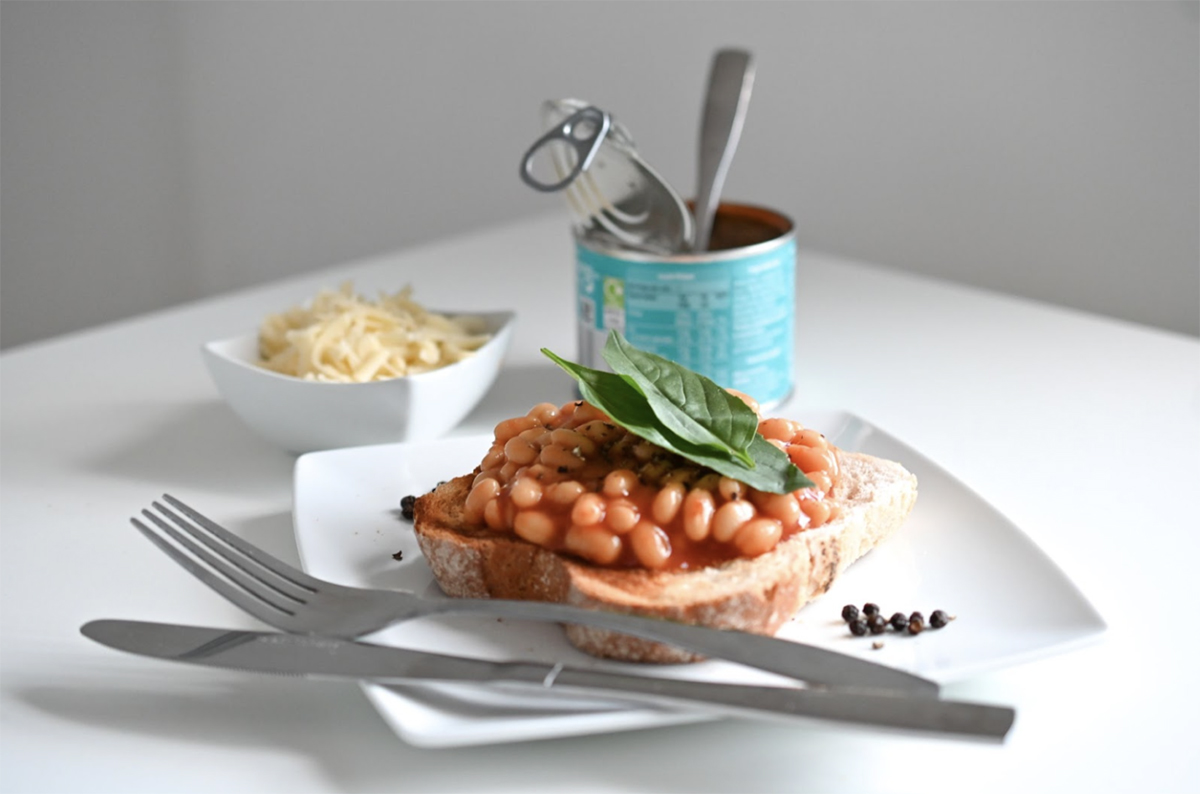February 15, 2023
As you read this, thousands of Brits will be eating a delicious plate of baked beans. But how did they become such a timeless classic? Luke Wilkinson investigates.


Rightly or wrongly, the UK does not have a good reputation for its food. Whether it’s haggis, fish and chips, or the deep fried mars bar, Britain is often ridiculed for its sometimes surprising and frequently unhealthy ‘delicacies'.
However, every cupboard across the British Isles does have one much-loved and ever-present healthy ingredient: the tin of baked beans.
The UK and Ireland are two of the only places in the world that eat baked haricot (aka navy) beans in tomato sauce for breakfast, lunch, or dinner, with 4.8 kg and 5.6 kg respectively of baked beans consumed per person every year.
But why? Where did this culinary delight appear from?
But where beans are concerned, their starting point is usually found in the Americas, where they have been farmed for millennia. One origin theory for modern baked beans suggests that native American cuisine long involved some form of baked bean dish, which would later be adopted by the English colonists in the 17th century.
Back in the 1400s, the French had invented the cassoulet – a baked dish of beans and meat – reportedly while fighting the Hundred Years War against the English. While the English may have lost that war, they at least gained a good recipe; the techniques learned from cassoulet cooking are thought to have been those used centuries later by those English colonists when adapting the existing native recipes.
Over time, American baked beans would become the sweetened, ‘Boston’ style baked beans seen across the US that use maple syrup, molasses, or brown sugar to create a sticky sauce. In New England, baked beans are so popular that the region's largest city, Boston, is known colloquially as ‘Beantown’!
Baked beans would not become truly popular on British shores until the H.J.Heinz company made pork and beans one of the very first foods to be canned and exported from America, and by 1886, Fortnum and Mason, a luxury department store popular with the royal family, was selling baked beans as a fancy, upmarket item. They initially sold for £2 a can, which is roughly £170 ($209) in today's money.
Once prices finally dropped, Baked beans would soon become part (the only healthy part…) of the full English breakfast.

A full english breakfast
Fortnum and Mason may no longer sell baked beans, but it remains popular with the royals – the UK’s current queen consort is herself a big fan of beans on toast, and the late Queen Elizabeth made a special visit to the U.K.'s largest Heinz beans factory on its 50th anniversary back in 2009.
But a major part of baked beans’ success is that they are enjoyed by all, regardless of class or status. Henry Heinz, the owner of the Heinz company, promoted them as the perfect meal to eat after a long hard day’s work.
Knowing a good thing when they saw one, British workers started eating them all the time. During the Second World War, baked beans became an important part of the rationing system that ensured that British people had enough food to eat during times of scarcity. Any pork was removed from the dish to save precious pennies for the war effort but for many Brits this made baked beans an important staple of every household.
Canned baked beans were also promoted as the perfect food to stockpile in the event of a nuclear war during the turbulent Cold War years of the 1960s. Those years also saw some strange uses of baked beans begin to enter British culture…
In 1967 the famous British rock band, The Who, had their guitarist picture on an album cover sitting in a bath of baked beans. Surprisingly, the bath of baked beans has since become something of a trend in the UK, particularly for people raising money for charity.

Captain Beany
The most famous example of this is the Welsh charity fundraiser Captain Beany, who set the world record in 1986, sitting in a bath of big beans for over 100 hours. He has images of baked beans tattooed on his head, and once climbed Mount Snowdon carrying baked beans with him all the way. And for the 2001 British general election, he formed a political party named the new millennium bean party. He was the only member of the party.
So, what’s next for baked beans? Do they remain as popular?
Back in 2017 Britons were eating approximately 540 million cans of baked beans every year. The most recent figures suggest that 2,500,000 cans of beans are currently sold in the UK every single day.
Old-fashioned innovation and a unique British willingness to put beans absolutely anywhere may be the key to their runaway success. You can now find beans inside pies, sausage rolls, stuffed into potatoes, or in their more traditional home on a simple slice of toast. Your beans can be posh, homemade, or straight out of the tin, cooked on the stove, and topped off with a bit of grated cheese.
There are really no limits to the ways you can use a tin of baked beans – they remain a healthy, flexible snack that is high in fiber and protein, low in fat, and can be counted as one of your five recommended fruits and vegetables per day.
If you haven't tried them, there is no time like the present – get to the shops, buy some bread and a tin of baked beans and treat yourself to a little comfort food!
Disclaimer: The opinions or views expressed in this publication are those of the authors or quoted persons. They do not purport to reflect the opinions or views of the Global Pulse Confederation or its members.